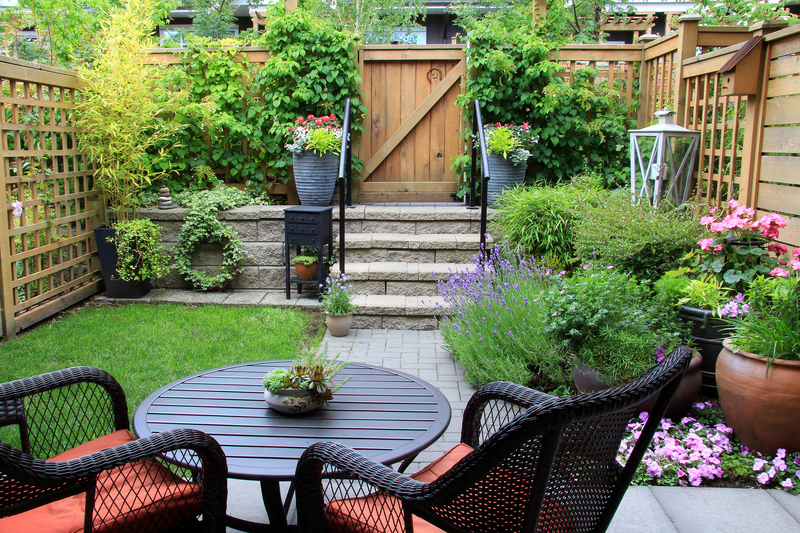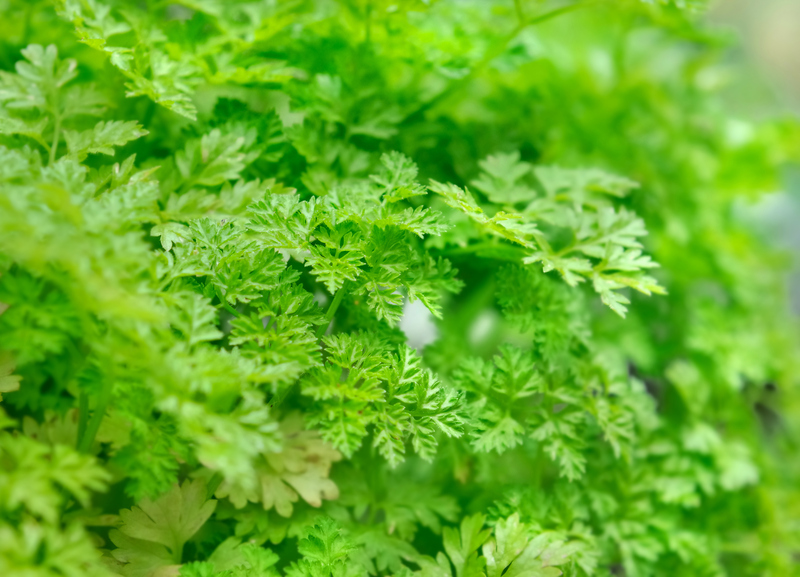From Seeds to Harvest: Container Gardening Unveiled
Posted on 01/07/2025
From Seeds to Harvest: Container Gardening Unveiled
Container gardening has revolutionized how urban dwellers and gardening enthusiasts grow their own food and flowers. Embracing limited spaces, this innovative approach lets you nurture plants from seeds to harvest on patios, balconies, and even windowsills. In this in-depth guide, we unveil everything you need to know about container gardening: from preparing your first pots of soil to reaping a bountiful harvest.
Why Choose Container Gardening?
Traditional gardening isn't always feasible, especially for those living in apartments or places without a backyard. That's where container gardening steps in, offering numerous benefits:
- Space-saving: Easily fits balconies, patios, rooftops, or small yards.
- Flexible: Move containers for best sunlight or seasonal changes.
- Pest control: Minimize exposure to soil-borne diseases and garden pests.
- Customizable: Choose soil blends, container designs, and layouts to match your style.
- Year-round gardening: Extend growing seasons with indoor setups or movable pots.

Getting Started: Essentials of Successful Container Gardening
Choosing the Best Containers for Your Plants
Container selection is the first step on your journey from seeds to harvest. The right container supports healthy root development, drainage, and stability.
- Material: Options include plastic, ceramic, terracotta, fabric, or even upcycled items like buckets or crates. Terracotta is porous, promoting airflow, while plastic retains more moisture.
- Size: Match container size to the plant's mature root system. Leafy greens do well in shallow pots; tomatoes and peppers require deeper, larger containers.
- Drainage: Good drainage is crucial. Ensure pots have holes at the bottom to prevent water-logging and root rot.
- Color: Light-colored pots reflect heat, keeping roots cooler in sunny climates.
Picking the Right Soil
Never use ordinary garden soil for container gardening. Containers demand a lightweight, nutritious, and well-draining potting mix.
- Potting Mix: Look for commercial blends or create your own with compost, peat moss or coconut coir, and perlite or vermiculite.
- Nutrients: Container plants exhaust nutrients faster, so incorporate slow-release fertilizers or organic amendments like worm castings and compost tea.
- pH Balance: Most vegetables prefer slightly acidic to neutral soil (pH 6.0-7.0).
From Seeds to Seedlings: Starting Your Container Garden
Whether sowing directly into containers or starting seeds indoors, getting your seedlings off to a healthy start is vital.
Choosing What to Grow
Many plants thrive in a contained environment. Consider the following:
- Vegetables: Tomatoes, peppers, lettuce, spinach, radishes, beans, carrots, and herbs like basil, cilantro, and parsley are top choices for container gardens.
- Flowers: Marigolds, pansies, petunias, nasturtiums, and zinnias add ornamental charm and may help deter pests.
- Fruits: Strawberries, blueberries (in acidic mixes), and compact citrus trees can also flourish.
Tip: Select dwarf or bush varieties for containers where possible.
Sowing Seeds and Caring for Young Plants
- Read the packet: Check seed depth, spacing, and sun needs.
- Fill containers: Use moist potting mix, leaving space at the top for watering.
- Sow and cover: Plant seeds at recommended depth and cover lightly with soil.
- Label: Use waterproof labels to track what's planted.
- Water gently: Mist or use a light spray to avoid disturbing seeds.
- Provide warmth and light: Place containers in a warm, sunny spot or under grow lights to speed germination.
- Thin seedlings: Remove weaker plants to give strong seedlings room to flourish.
Transplanting and Potting Up
If you start seeds indoors, carefully transplant seedlings to larger containers once they develop 2-3 sets of true leaves. Handle by the leaves (not stems) to avoid damage.
- Prepare pot holes: Dig holes in the container large enough for roots.
- Water: Moisten soil before transplanting.
- Transplant: Set seedlings at the same depth as in their seedling trays.
- Firm and water: Settle them in and water to ease root shock.
Everyday Care of Your Container Garden
Watering Strategies for Containers
Watering is the lifeblood of any container garden. Soil in pots dries out faster than garden beds.
- Frequency: Check daily, especially on hot or windy days. Most containers need watering once or twice a day in mid-summer.
- Technique: Water until it drains from the bottom; avoid soggy conditions.
- Soil Moisture: Test with your finger--soil should be moist but not wet below the surface.
- Mulching: Apply organic mulch, like straw or bark chips, to reduce evaporation.
Feeding and Fertilizing
Container plants need extra feeding to thrive:
- Slow-release Fertilizer: Mix into soil at planting time for ongoing nutrition.
- Liquid Fertilizer: Apply diluted liquid feed every 2-3 weeks during the growing season.
- Organic Boosts: Use compost tea or fish emulsion for a gentle nutrient boost.
Managing Pests and Diseases
Although container gardening limits many problems, vigilance matters:
- Inspect regularly: Check leaves, stems, and soil for pests like aphids or spider mites.
- Disease prevention: Ensure good air circulation and avoid overhead watering.
- Natural remedies: Neem oil, insecticidal soap, or hand-picking can control pests without harsh chemicals.
- Companion planting: Grow herbs or flowers that repel insects and boost growth.
Maximizing Yield: Growing for Abundance
Succession Planting
Enjoy continuous harvests by practicing succession planting. As soon as one crop (like lettuce or radishes) finishes, replace it with a new sowing. This keeps your containers productive all season long.
Vertical Gardening Techniques
- Treillage and cages: Grow vining plants like cucumbers or peas up trellises or cages to save space.
- Stacked planters: Use layered systems or shelves to utilize vertical space on balconies and patios.
- Hanging baskets: Great for strawberries, cherry tomatoes, or trailing flowers.
Pollination Tips for Fruitful Harvests
Many fruiting plants require pollination:
- Hand-pollinate: Gently brush flowers with a small paintbrush to transfer pollen.
- Attract pollinators: Plant fragrant flowers nearby to attract bees and butterflies.
- Group plants: Having several of the same plant type enhances cross-pollination.
The Moment of Truth: Harvesting Your Container Crops
Harvest time is the reward for your efforts. Proper timing ensures the best flavor and yield.
General Harvesting Guidelines
- Leafy greens: Pick outer leaves first or cut entire heads when mature.
- Herbs: Snip leaves as needed, encouraging bushier growth.
- Tomatoes and peppers: Harvest when fully colored and slightly soft to the touch.
- Root crops: Pull up when tops die back or after checking size.
- Continuous harvest: Pinch off flowers on herbs like basil for a longer harvest period.
Tip: Use sharp scissors or pruners to avoid damaging plants.
Common Challenges and How to Overcome Them
Overwatering and Underwatering
- Signs of overwatering: Wilting, yellow leaves, or moldy soil. Always check soil moisture below the surface.
- Underwatering: Brown leaf tips, dry soil, and stunted growth. Increase watering frequency during dry spells.
Lack of Sunlight
- Solution: Move containers to sunnier spots or use reflective surfaces to amplify light on balconies.
- Supplement: Consider grow lights for indoor setups, especially during winter.
Nutrient Deficiency
- Yellowing leaves or slow growth: Feed with a balanced fertilizer and refresh soil annually.
- Rotate crops: Prevent nutrient depletion by switching plant types between seasons.
Container Gardening Through the Seasons
Spring:
- Sow cool-season crops like lettuce, peas, and spinach.
- Plant bulbs and perennials in ornamental containers.
Summer:
- Grow heat-lovers: tomatoes, peppers, beans, and basil.
- Water more frequently and mulch containers.
Fall:
- Switch to quick-growing greens and root crops.
- Start overwintering hardy herbs indoors.
Winter:
- Use greenhouses or bring small containers indoors.
- Plan next year's crops while maintaining overwintered plants.

Creative Container Ideas to Inspire You
With a little imagination, container gardens can be as stylish as they are productive:
- Repurpose vintage crates, teapots, or boots for quirky planters.
- Create color-coordinated flower bowls for seasonal decor.
- Build a herb spiral or vertical wall of succulents.
- Mix edibles and ornamentals for a lush, multipurpose garden.
Conclusion: Reaping the Rewards of Container Gardening
From a modest pot of parsley on the windowsill to a lush balcony overflowing with tomatoes, container gardening lets you unlock the joy of growing your own food--even in small spaces. With the flexibility to move, customize, and intensively care for your plants, the path from seeds to harvest is within everyone's reach. Embrace the possibilities of container gardening and transform your urban space into an oasis of color, flavor, and natural beauty all year round.
Start today; plant a seed, nurture a pot, and savor the harvest--one container at a time.

